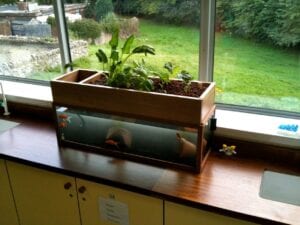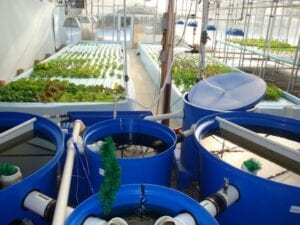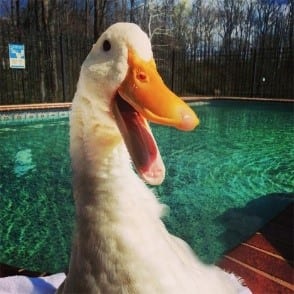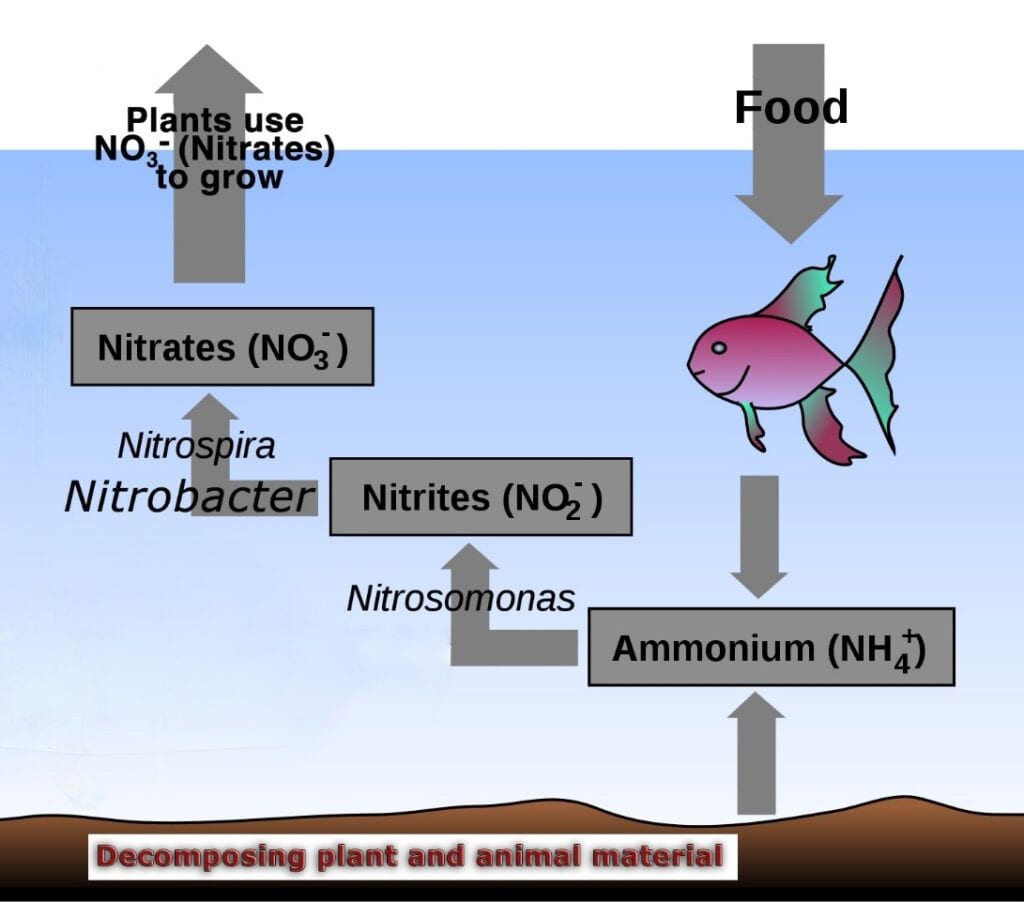2. Aquaponics
Hydroponics (water-based plant farming) + aquaculture (water-based animal farming) = aquaponics.

Aquaponics allow you to grow large quantities of vegetables and fish in a small space year-round and is especially suitable for indoor and balcony use. On the downside, you must have a backup energy source in the event of power failure.
The aquaponic process is built on the synergy between fish and plants, and the systems can be simple or complex.
Fish waste is digested by bacteria, which is pumped through growing media to provide perfectly balanced plant food. In other words, no fertilizers are needed, because the fish provide it organically.
Plants, therefore, remove the wastes from the water, cleaning it for the fish and providing optimal conditions for any other fauna relying on the system.
Fish can be fed entirely from kitchen and farm wastes (which we will cover in more detail tomorrow).

Fish Components
Many different animals can be used to nitrify your system.
- Fish
- Shrimp or river lobster
- Animal manures or composts in solution
 If you don’t like fish but want a protein component in your diet, you could get some ducks and a small paddle pool, run their pool water through your aquaponics system… and create quack-wa-aponics! (Sorry, couldn’t help myself.)
If you don’t like fish but want a protein component in your diet, you could get some ducks and a small paddle pool, run their pool water through your aquaponics system… and create quack-wa-aponics! (Sorry, couldn’t help myself.)
Speaking seriously, though, any animal waste can be used to create liquid plant food. The ammonia in the waste is turned into nitrites (by Nitrosomonas bacteria) and then into nitrates (by the Nitrobacter bacteria).

Plant Components
The following will do well in any IRA system:
- Any leafy lettuce
- Basil
- Chives
- Arugula
- Watercress
- Bok choy
- Kale
- Swiss chard
- Mint
- Most common house plants
Plants that have higher nutritional demands do best in a heavily fish-stocked, well-established aquaponics systems:
- Tomatoes
- Peppers
- Cucumbers
- Cauliflower
- Cabbage
- Squash
- Beans
- Peas
- Broccoli
- Cauliflower
- Many others with practice
More intensively-stocked systems can:
- Produce much more fish per volume of water.
- Require more rigorous nutrient removal to prevent fish distress.
- Requires more monitoring.
- Requires air pumps to oxygenize the water to prevent fish drowning.
- Digital oxygen, PH and TDS monitors recommended for system safety.
- Loads of up to 150 kg of fish per cubic meter of water possible (but not recommended).
- Heavy feeding plants might be needed to balance a system this dense.
